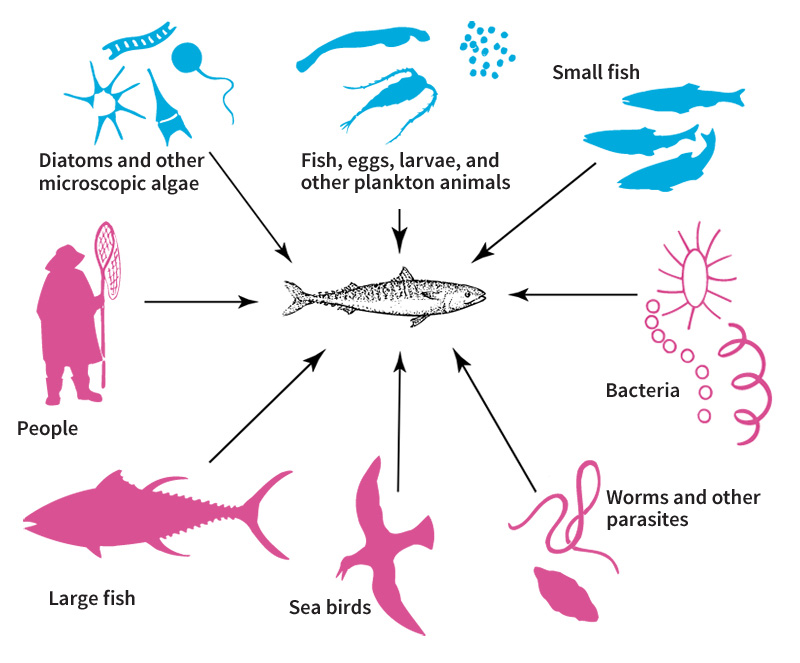Food chain describes how energy in the form of food passes from one organism to another in an ecosystem . An ecosystem is made up of all the living and nonliving things in a particular environment and the interactions that occur among them. Scientists who study how ecosystems work, called ecologists, divide the organisms that make up a food chain into three main categories: producers , consumers , and decomposers . Each category may be divided into primary, secondary, and additional subdivisions.
The sun provides the energy that nearly all primary producers need to make food. On land, primary producers consist mainly of green plants, such as grass and trees, which make food from nonliving substances through the process of photosynthesis . Primary consumers include plant-eating animals, such as mice, rabbits, grasshoppers, cattle, and deer. Foxes, skunks, snakes, wolves, and other secondary consumers—or predators—eat animals. Decomposers, such as bacteria and fungi, break down dead plants and animals into simple nutrients. The nutrients flow back into the soil and are used again by plants.
Ecologists describe each link in the food chain as a trophic (feeding) level. As energy passes through each link of a food chain, some of it is lost as heat. In addition, not all the organisms at the lower stages of a food chain are consumed by the organisms of the next trophic level. As a result, there is less and less energy available in the form of food for each successive higher trophic level. The energy flow between trophic levels is often shown as a pyramid. Primary producers form the base of the pyramid while predators are found at the top.
The lack of available energy at higher trophic levels limits the amount of biomass (biological material) that can exist at those levels within a particular ecosystem. Thus, an ecosystem will always have fewer predators compared wth the number of primary consumers or primary producers.

Food chains are a useful way to simply describe how energy flows between levels among organisms. However, feeding relationships between organisms in an ecosystem are usually more complex than a simple food chain. The series of interconnected food chains that describe how energy flows within an ecosystem is called a food web.
Food webs share many general features even in different ecosystems. Most food chains are short and involve only a few trophic levels. Shorter food chains tend to be more stable over time. In addition, most consumers usually feed on a limited variety of other organisms and consumers usually feed on trophic levels directly below their own. Most ecosystems have few omnivores—that is, organisms that feed on both producers and consumers and thus feed at more than one trophic level. These common features make it easier for ecologists to study and understand food webs.
